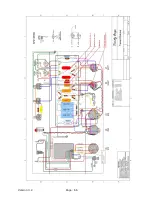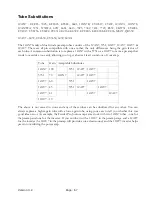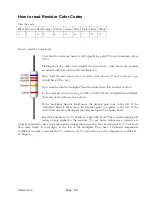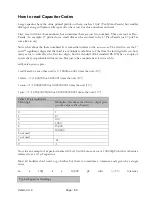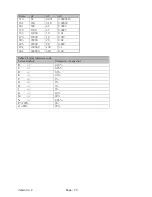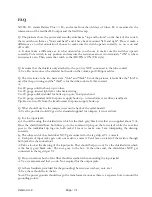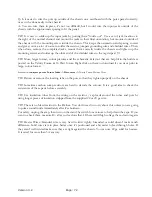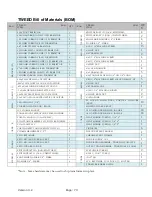
Version 3.2
Page: 58
If the winding is not grounded and balanced around ground, it will cause hum. Measure the voltage
from each side of the 6.3V to ground; it should be pretty much exactly half the AC voltage at either
end. If it is unbalanced to ground, tweak the pot or change the resistors to get it to be.
Note
: If you have grounded center tap style supply that is not centered on ground, this indicates a
faulty power transformer.
TIP:
If your heater wires did not have a center ta
p to connect to ground, then put a 100 Ω
anti-hum
resistor to ground
from each side of the heater wires to the common ground point. This will add a ground
reference to the heater voltages and help to reduce hum.
Other methods are low value pot (200-
500 Ω)
across the whole 6.3V with the wiper grounded.
Defective input jack
If the input jack is not making good contact to the guitar cord shield, it will hum. Likewise, if the jack
has a broken or poorly soldered ground wire, or not-very-good connection to the grounded chassis, it
will cause hum. If messing with the jack changes the hum, suspect this.
TIP:
If hum or noise exists when the input plug is removed, try re-soldering the connections to the
Input jacks.
Poor AC grounding
In amps with two wire cor
ds, defects of the ‘ground reverse’ switch and/or capacitor can cause hum. A
leaky power transformer can also cause this.
Induced hum
Placement of the amplifier near other equipment can sometimes cause it to pick up radiated hum from
other equipment. Suspect this if the hum changes loudness or tone when you move or turn the amp.
There is usually nothing you can do about this except move the amp to where the hum is less.
Poor internal wire routing
If the signal leads inside the amp are routed too near the AC power wires or transformer, or alongside
the high-current filament supply wires, they can hum. Sometimes using shielded cable for signal runs
inside the cabinet can help. It is hazardous to do, but you can open the amp up and use a wooden
chopstick (NOT A PENCIL) to move the wires around inside to see if the hum changes. This is hard
to do well and conclusively, since the amp may well hum more just because it is open. BE VERY
CAREFUL NOT TO SHORT THINGS INSIDE THE AMP.
Poor AC Chassis Ground at Power Transformer
A common problem is the main ground point to the chassis. The green wire ground to the chassis, the
‘line reverse’ cap, the CT on the filament windings, the CT on the high voltage windings, and other
things associated with power or RF shield grounding are often tied to lugs held under one of the power
transformer mounting bolts. If this bolt becomes loose, or if there is corrosion or dirt under the lugs,
you can get an assortment of hum problems.
Содержание Trinity Tweed Amp
Страница 2: ...Version 3 2 Page 2 ...
Страница 16: ......
Страница 20: ...Version 3 2 Page 20 Input Jack Theory from 18watt com ...
Страница 25: ...Version 3 2 Page 25 ...
Страница 49: ...Version 3 2 Page 49 ...
Страница 65: ...Version 3 2 Page 65 HEYBOER OT for TWEED 6L6GT CONVERSION ...
Страница 66: ...Version 3 2 Page 66 ...
Страница 75: ...Version 3 2 Page 75 ...
Страница 76: ...Version 3 2 Page 76 ...
Страница 77: ...Version 3 2 Page 77 Trinity Amps Schematics and Layouts ...























